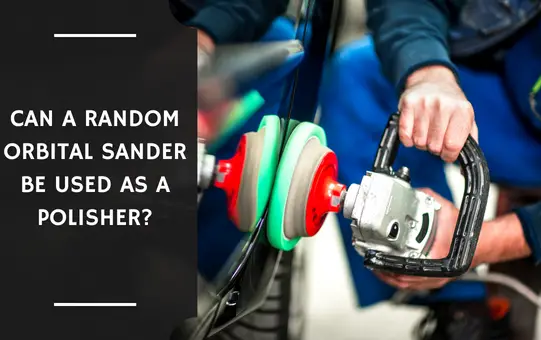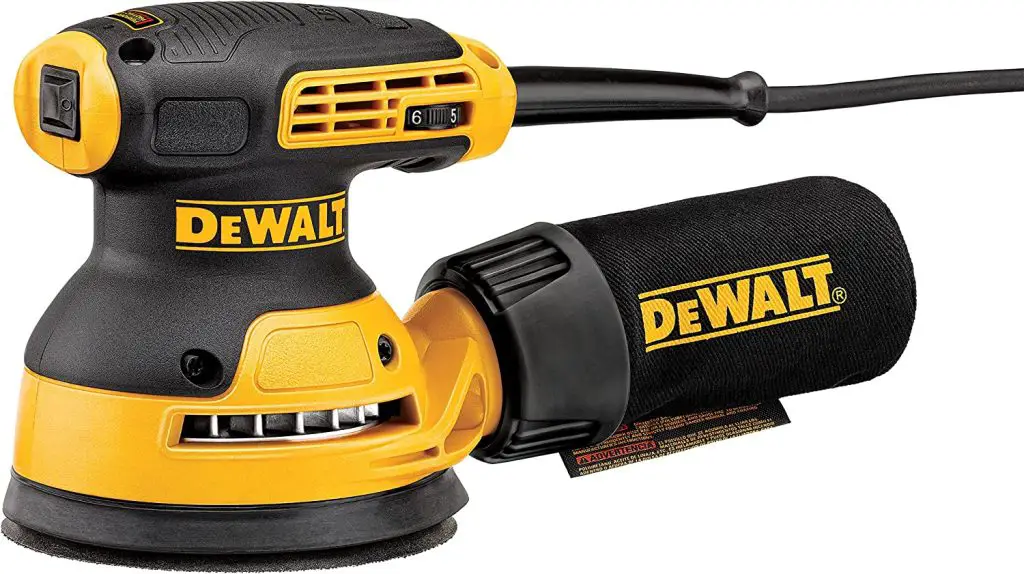Random orbital sanders and polishers are both versatile tools that can be used for different purposes.
Can a Random Orbital Sander Be Used as a Polisher?
Yes, but not as well as a belt sander or power sanding machine. The random orbital sander will be best used for rough sanding and polishing. It will be difficult to finish sanding or polishing with this tool.
In this article, we will explore this topic and discuss the key differences between these tools. We will also examine the potential benefits and drawbacks of using a random orbital sander as a polisher.
See Also: Can You Use Orbital Sander on Drywall?
Can a Random Orbital Sander Be Used as a Polisher? – Guide
A random orbital sander can technically be used as a polisher, but it is not recommended because it is not as effective as a polisher specifically designed for polishing. Here are the details about random orbital sander use:
Understanding Random Orbital Sanders and Polishers
Before diving into whether a random orbital sander can function as a polisher, it is essential to understand the basic characteristics of both tools.
A random orbital sander is primarily designed for sanding applications. It features a round sanding pad that moves in an elliptical or random pattern.
This motion helps to minimize visible sanding marks and swirls on the surface being worked on.
On the other hand, a polisher is specifically designed for the purpose of applying and buffing polishing compounds or waxes onto surfaces.
It typically has a spinning head that moves in a circular motion at high speeds. Polishers are commonly used in automotive detailing, furniture refinishing, and other applications where a high-gloss finish is desired.
Key Differences between Random Orbital Sanders and Polishers
While random orbital sanders and polishers may seem similar at first glance due to their circular motions, there are crucial differences between the two:
- Motion Pattern: Random orbital sanders move in a random or elliptical pattern, while polishers have a consistent circular motion. The random motion of sanders helps to minimize swirl marks, whereas polishers create a uniform, high-speed rotation that is ideal for applying and buffing polishes.
- Speed: Sanders tend to operate at lower speeds compared to polishers. This is because sanding requires more control and finesse, while polishing often requires higher speeds to achieve the desired finish.
- Pads and Accessories: The pads and accessories used with sanders and polishers also differ. Sanders typically uses sanding discs with abrasive materials to remove material from the surface. In contrast, polishers use soft foam or wool pads designed to apply and buff polishing compounds or waxes.
Using a Random Orbital Sander as a Polisher: Benefits and Drawbacks
While a random orbital sander is primarily intended for sanding, it is possible to use it as a polisher. However, there are both benefits and drawbacks to consider:
Benefits:
- Versatility: Using a random orbital sander as a polisher allows you to have a multi-purpose tool, eliminating the need for a separate polisher in your toolkit.
- Minimal Swirl Marks: Due to the random motion of the sander, it can help minimize the formation of swirl marks on the surface, providing a relatively smooth finish.
Drawbacks:
- Slower Polishing: Orbital sander polisher typically operate at lower speeds compared to dedicated polishers. As a result, the polishing process may take longer.
- Less Control: Sanders may not offer the same level of control and precision as dedicated polishers. This can be especially important when working on delicate surfaces or performing intricate polishing tasks.
can you use a polisher as a sander: Considerations
If you decide to use a random orbital sander as a polisher, here are a few considerations to keep in mind:
Compatible Pads
Ensure that the sanding pad of the orbital sander polisher is compatible with polishing pads.
Polishing pads are specifically designed for use with polishers, so you may need to find suitable adapters or attachments.
Speed Control
Check if your random orbital sander has variable speed settings. Check if your random orbital sander has variable speed settings.
Some random orbital sanders come with adjustable speed controls, which allow you to adjust the speed according to your specific polishing needs.
This feature is beneficial as it provides you with more control over the polishing process.
When using a random orbital sander as a polisher, it is important to choose a slower speed setting to ensure better control and prevent the risk of damaging the surface.
Higher speeds may result in excess heat generation or an uneven distribution of polishing compounds.
If your random orbital sander does not have variable speed settings, it may not be ideal for polishing tasks.
However, you can still attempt to use it by applying less pressure and working at a slower pace to achieve a satisfactory result.
It’s essential to exercise caution and perform a test on a small, inconspicuous area before proceeding with larger polishing projects.
Conclusion
Can an orbital sander be used as a polisher? In short, while a random orbital sander can be used as a polisher, it is not the most effective tool for the job.
Random orbital sanders lack the specific features and capabilities of dedicated polishers.
Although using a random orbital sander as a polisher offers versatility and the potential to minimize swirl marks, it has drawbacks such as slower polishing speeds and less control.
If you choose to use a random orbital sander as a polisher, ensure you have compatible pads and test on a small area.
However, for optimal results and professional-quality finishes, investing in a dedicated polisher is recommended.
I hope this blog post is helpful for you in understanding can a random orbital sander be used as a polisher.
Read Also: How Orbital Sander Works?

